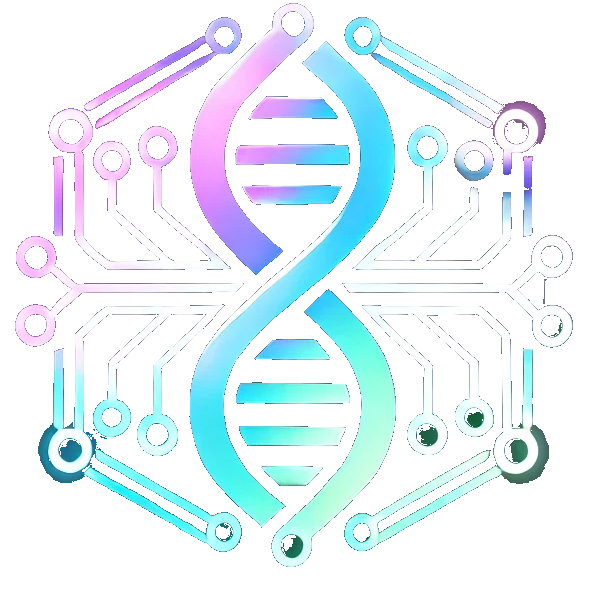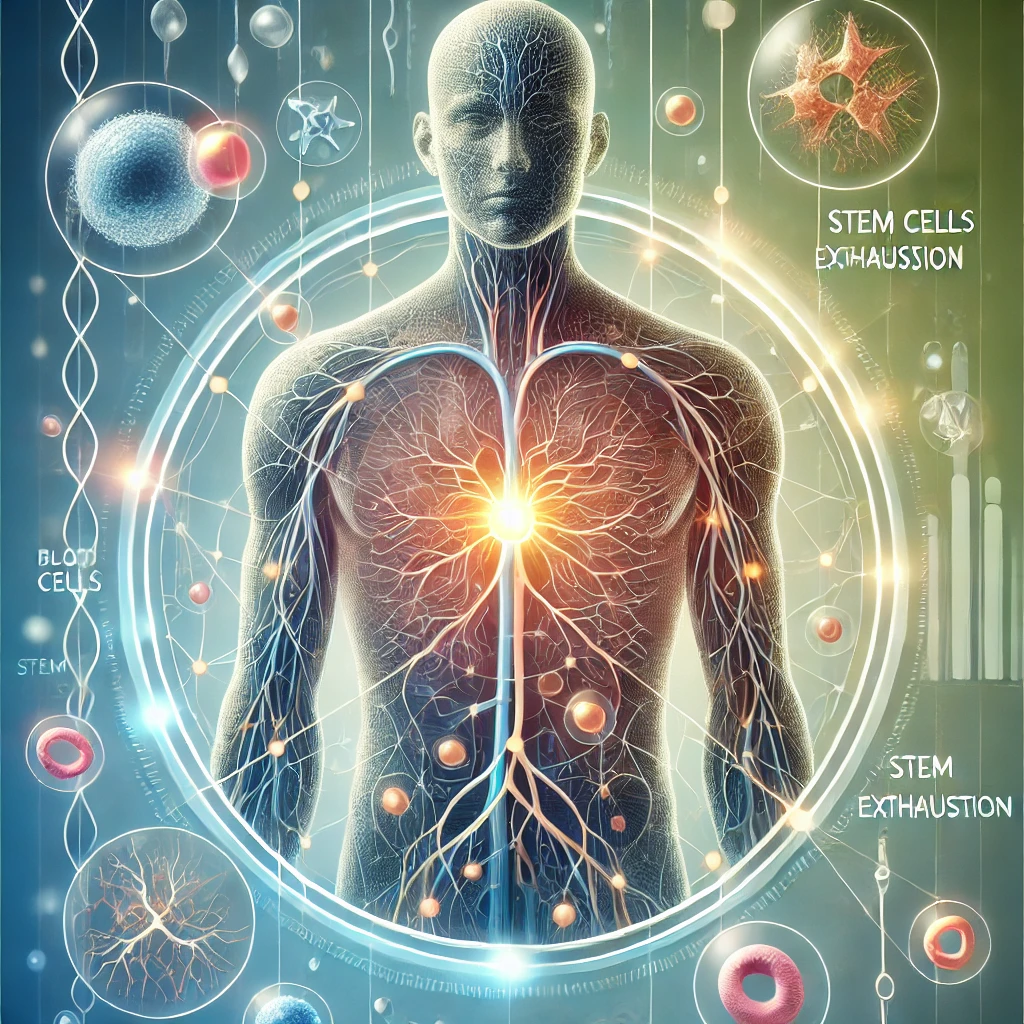1. Stem Cell Exhaustion
Description
- Stem cell exhaustion refers to the decline in both the function and the number of stem cells as an organism ages.
- Stem cells are essential for tissue homeostasis and regeneration. Over time, they accumulate DNA damage, epigenetic alterations, and metabolic dysregulation, which reduce their proliferative and regenerative capacities.
- This loss of stem cell function is evident in various tissues:
- Hematopoietic stem cells (HSCs): impaired blood cell production and immune function.
- Muscle satellite cells: reduced muscle repair and sarcopenia.
- Neural stem cells: diminished neurogenesis and cognitive decline.
Potential Interventions
- Lifestyle and Nutritional Support
- Regular Exercise
- Helps maintain stem cell niches, particularly in muscle tissue (satellite cells), and can promote neurogenesis.
- Balanced Diet / Caloric Restriction (CR)
- CR and intermittent fasting may slow the decline in stem cell function by reducing metabolic stress and inflammation.
- Quality Sleep & Stress Management
- Chronic stress and poor sleep can exacerbate stem cell dysfunction via elevated inflammation and hormonal imbalances.
- Regular Exercise
- Cellular and Molecular Therapies
- Stem Cell Transplantation
- Hematopoietic stem cell transplants are already used clinically for certain blood disorders.
- Mesenchymal stem cell (MSC) therapies are being explored to treat tissue damage and inflammatory conditions.
- Ex Vivo Stem Cell Expansion
- Techniques to expand patient-derived stem cells in culture before reinfusion.
- Gene Editing / Reprogramming
- CRISPR-based methods and partial reprogramming (Yamanaka factors) are under investigation to rejuvenate or correct damaged stem cells, though these remain largely experimental.
- Stem Cell Transplantation
- Pharmacological Approaches
- Senolytics / Senomorphics
- By reducing senescent cell accumulation (and associated inflammatory signals), these agents could help preserve a healthier stem cell environment.
- mTOR Inhibitors (e.g., Rapamycin)
- Low-dose rapamycin may improve stem cell function by mitigating hyperactivation of growth signaling, reducing proteotoxic and inflammatory stress.
- Senolytics / Senomorphics
2. Altered Intercellular Communication
Description
- Altered intercellular communication involves disruptions in the signaling between cells, tissues, and organs, leading to a breakdown in systemic homeostasis.
- With age, there is an increase in inflammatory signals (often termed “inflammaging”), hormonal imbalances, and immune system dysregulation.
- Key aspects include:
- Chronic Low-Grade Inflammation
- Senescent cells secrete pro-inflammatory cytokines, chemokines, and proteases (the SASP).
- Visceral adiposity and a dysregulated gut microbiome can amplify systemic inflammation.
- Neuroendocrine Changes
- Altered hormone levels (e.g., growth hormone, sex hormones, cortisol) disrupt tissue function.
- Dysregulated Immune Response
- Overactive or malfunctioning immune cells can damage tissues, while immunosenescence impairs pathogen clearance.
- Chronic Low-Grade Inflammation
Potential Interventions
- Anti-Inflammatory Strategies
- Dietary Components
- Omega-3 fatty acids, polyphenols (e.g., curcumin, resveratrol) can help lower systemic inflammation.
- Pharmacological Agents
- Low-dose rapamycin, metformin, or other compounds that reduce pro-inflammatory signaling.
- Gut Microbiome Optimization
- Prebiotics, probiotics, and a high-fiber diet help maintain a balanced microbiome, reducing endotoxin-driven inflammation.
- Dietary Components
- Hormonal Modulation
- Hormone Replacement or Optimization
- Under clinical guidance, correcting severe hormone deficiencies (e.g., thyroid hormone, sex hormones) may restore some aspects of youthful physiology.
- Lifestyle Interventions
- Regular exercise, stress management, and proper sleep can positively influence hormonal balance (e.g., cortisol, melatonin).
- Hormone Replacement or Optimization
- Immunomodulation
- Vaccinations and Immune Support
- Keeping up with recommended immunizations, maintaining sufficient micronutrients (e.g., vitamin D, zinc), and managing chronic diseases.
- Cell Therapies / Immune Rejuvenation
- Emerging research on “resetting” the immune system (e.g., thymus regeneration) or adoptive cell transfer to enhance immune surveillance.
- Anti-SASP Interventions
- Compounds that reduce the senescence-associated secretory phenotype can diminish systemic inflammation, improving overall intercellular signaling.
- Vaccinations and Immune Support
Summary
- The integrative hallmarks of aging—stem cell exhaustion and altered intercellular communication—represent higher-level manifestations of damage accumulated from the primary and antagonistic hallmarks.
- Stem cell exhaustion compromises tissue regeneration, while altered intercellular communication leads to persistent inflammation (inflammaging), hormonal imbalances, and immune dysfunction.
- Interventions that address these issues range from healthful lifestyle measures (exercise, diet, stress management) and pharmacological agents (senolytics, mTOR inhibitors, anti-inflammatory compounds) to advanced cellular therapies (stem cell transplantation, gene editing) aimed at rejuvenating stem cells and restoring healthy cell-to-cell signaling.
- While research continues to advance rapidly—especially in stem cell and immune modulation—successful translation to human clinical practice requires comprehensive studies on safety, efficacy, and long-term outcomes. Nonetheless, these integrative hallmarks remain critical targets for extending healthspan and delaying the onset of age-related diseases.



